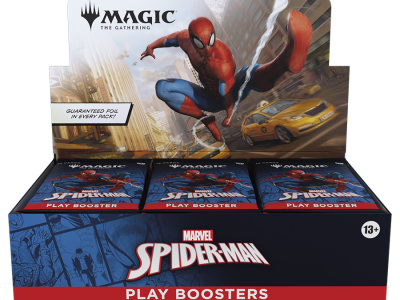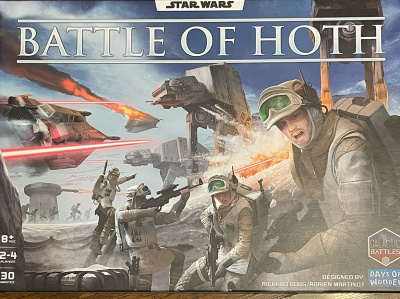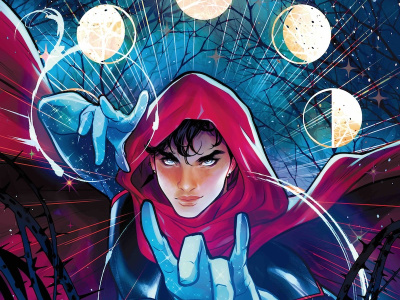Madison, Wisconsin. I returned from the convention circuit this summer with the overwhelming impression that a massive force is transforming pop culture. This force has been building incrementally for decades and is now overwhelming everything in its path. No, I'm not talking about the Internet (this time); I'm talking about the increasing Japanese influence on pop culture, especially in those categories near and dear to the entertainment hobbyist. Over the last four weeks, I've attended three major conventions, cumulatively representing over 100,000 attendees -- San Diego Comicon (San Diego, California), Wizard World (Chicago, Illinois), and Gencon (Milwaukee, Wisconsin). These conventions touch all of the major entertainment hobbyist product categories and are geographically diverse enough to be representative. What struck me at these shows was not just the fact that the number of booths, products, events, and promotional activities devoted to Japanese properties was up over last year, but the fact that this trend has been continuing for decades, shows no sign of abating, and is reaching the kind of critical mass that signals a change in the American cultural mainstream.
The first event I attended was the San Diego Expo, the trade event that precedes the Comicon. Based on my count of the exhibitor list and my recollection of the companies involved, around 20% of the exhibitors were primarily devoted to products based on Japanese properties. This number does not include companies like Wizards of the Coast, Beckett, or Dark Horse, which get a significant percentage (perhaps even a majority, in WotC's case) of revenues from such products. Of special note were several new (to me) distributors specializing in Japanese imports for the specialty trade. Diamond's booth at the Expo also had a heavy Japanese toy presence.
The mix in the exhibit hall of the Comicon consumer show also showed increasing percentages of Japanese products. And the booths were segmented more than ever this year into every niche and cranny, and very successfully so. For example, I saw two multi-space booths specializing in Japanese-language anime soundtrack recordings, both of them mobbed. Toys and videos (still mostly tapes, but increasing percentages of DVDs) were probably the two biggest categories, with comics, soundtracks, apparel, and wall art not far behind. There were plenty of companies selling English-language products, including Viz, CPM, Mixx, ADV, Pioneer, Manga Entertainment, and so on; but in testament to still-unfilled demand, there were also many booths (such as the soundtrack booths referenced above) where everything sold was in Japanese, which I'm sure few of the attendees understand.
Wizard World (nee Chicago Comicon), two weeks later, is traditionally more of a comic convention than San Diego, with a greater emphasis in the exhibit hall on comics and other core hobbyist categories and a greater concentration of audience in the young male demographic. Nonetheless, the trend toward an increasing presence of Japanese toys, videos, and licensed merchandise was also in force there, and while the net weight of Japanese properties was not as great as it was in San Diego, the pace of change was visible at the same rate or higher.
Gencon -- the show WotC inherited from TSR -- was rocking and rolling this year, primarily due to the release of AD&D 3rd Edition on the eve of the show. This show focuses not only on roleplaying, ccg, and miniature games, but also has a significant videogame presence. The growth of Japanese products there was primarily visible in two areas. In collectible card games, Japanese granddaddy Pokemon may be fading, but its spawn Digimon, Dragonball Z, Monster Rancher, and their brethren seem to be proliferating. And in videogames, this show was a reminder that console games are currently owned by Japanese companies (at least until the X-Box), and that much of the software both for consoles and for PCs is either based on Japanese properties or looks like it is.
The properties that were hot were pretty consistent across all three shows, with a few minor differences. Gundam Wing has the most heat, and represents the leading edge of the animation/merchandise wave. While Dragonball Z may be softening a little in the specialty retail market, the amount of product showing up gives me the feeling that it's just getting started in the mass market. And Pokemon, while largely Pokegone for specialty retailers, is still generating significant dollars over-all due to massive distribution and a huge roster of licensed products. The difference between San Diego and Wizard World was instructive in this regard--Pokemon was definitely more visible in San Diego, which I assume was due to the larger percentage of civilian (as opposed to hard-core entertainment hobbyist) floor traffic there.
Why did the Summer 2000 conventions lead me to the conclusion that a major cultural shift is underway? There are three reasons. First, this is a very long-term growth trend of at least two decades duration. I remember selling Japanese-language Gundam Roman albums, transforming toys, and other Japanese products in the very earliest years of Capital City Distribution (around 1980-81). Each year since then, the popularity of Japanese properties has grown on a very steady curve until Pokemon exploded over the last 18 months and opened the doors to a mass audience. As the shape of the post-Pokemon landscape begins to emerge, it's clear that the trend is not peaking, but continuing, segmenting, and growing.
Second, the growth in popularity of Japanese properties is not product category-specific. It crosses videos, comics, toys, apparel, and everything else you can put a logo on. From Sailor Moon mirror and comb sets to limited edition resin statues, there is something for everyone, reflecting the broad appeal (across sex and age) and economic potential of these properties.
And third, these shows reinforced that consumers are being conditioned for the future by being exposed to the visual lexicon of Japanese entertainment, by enjoying what they experience, and most importantly by learning to associate cool with all things Japanese. As I watch my 6-year-old son trade Japanese Pokemon cards with his friend from next door, it evokes how a German, Mexican, or Japanese parent may have felt as he watched his offspring enjoy American music, movies, toys, or television at various times over the last 50-100 years -- you can't fight a pop culture wave when it heads your way. My son is learning that cool stuff comes out in Japan first, then makes its way to the U.S. in Japanese, and eventually, after an interminable wait, comes out in English. To the extent this lesson is internalized and reinforced by other experiences (for example by videogames, toys, and cartoons) it predisposes him to expect that the next Japanese import will also be cool.
Pokemon fans are at the low end of the age distribution for heavy entertainment consumers, entertainment hobbyists at the high end. Together they are the front edge of a transforming wave for American culture. Americans are no strangers to cultural hegemony, but they've usually been on the other side of the equation. The wholesale importation of a significant chunk of another nation's culture into the home of the most dominant entertainment industry the world has ever seen demonstrates that finally, true global competition is coming to the world of the American entertainment hobbyist, and perhaps more broadly to the world of entertainment.
The growing popularity of Japanese pop culture in the United States is not a bubble; bubbles grow and collapse quickly. A twenty-year continuous trend definitely qualifies this as something more. It feels like the long-term addition of a new category of entertainment, which is still growing and finding its place in the American cultural mix. This is a comment on the Japanese entertainment products vs. their American counterparts -- the Japanese products are meeting the needs of a significant segment better than American ones are and are finding success in the marketplace as a result. This kind of competitive advantage does not usually materialize or disappear overnight -- we can expect this to be part of the U.S. market for a long time to come.
There are some obvious upper limits to the phenomenon. First, there are limits to the American willingness to consume Japanese culture. For example, Japanese pop music is still nowhere, and live action movies are relegated to a small niche. There are also limits to the percentage of the total entertainment pie that can be occupied by anime and manga; in Japan, manga account for about 40% of publishing. But these limits are much higher than current levels of acceptance, so I expect continuing growth over the long term to levels considerably higher than they are now.
The best news is that this influx of creativity from Japan is a good thing for the consumers and sellers of pop culture in the U.S. (although not necessarily for the American producers of such products). U.S. pop culture is richer for the availability of a wide variety of high-quality Japanese products, and it's increasing the size of the pie by involving consumers, including substantial numbers of women, that otherwise would be disenfranchised. We can only hope that American producers of entertainment can be as stimulated by the new competition as other industries have been when faced with global competitors and create better products as a result.







